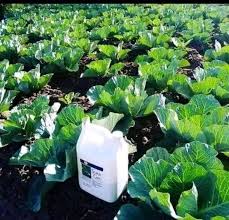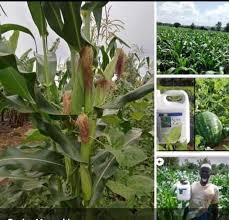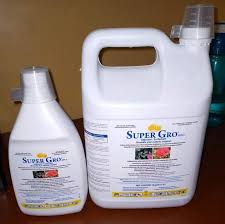Super Gro is a popular growth enhancer widely used in agriculture to boost crop yield and overall plant health. It is a liquid fertilizer that contains essential nutrients, including nitrogen, phosphorus, potassium, and micronutrients, designed to promote rapid growth and enhance the development of crops. Understanding how often to apply Super Gro is crucial for achieving optimal results in your farming practices.
The frequency of applying Super Gro largely depends on various factors, including the type of crops being grown, the growth stage of the plants, soil fertility, and environmental conditions. Generally, crops require different nutrient levels at various growth stages, from germination to flowering and fruiting. This means that timing your applications is essential for meeting the specific nutritional needs of your plants.
In general, it is advisable to apply Super Gro every two to four weeks, but this can vary based on crop type and growth stage. For instance, during the initial growth stages, crops may benefit from more frequent applications to support strong root development and leaf growth. As plants mature, the frequency of application can be adjusted based on their nutrient uptake and overall health.
Soil fertility is another significant factor in determining how often to apply Super Gro. Conducting soil tests can provide valuable insights into the nutrient levels present in your soil and help tailor your fertilization schedule accordingly. If your soil is already rich in certain nutrients, you may find that you can reduce the frequency of Super Gro applications. Conversely, if your soil is deficient in key nutrients, more frequent applications may be necessary to ensure your crops receive the support they need.
Environmental conditions also play a role in the application frequency. Factors such as rainfall, temperature, and humidity can influence plant growth and nutrient absorption. For example, heavy rainfall can wash away nutrients from the soil, necessitating more frequent applications of Super Gro. In contrast, during periods of dry weather, plants may require less frequent applications as their growth slows down.
It’s also essential to follow the manufacturer’s guidelines and recommendations for application rates and frequency. Over-application of fertilizers can lead to nutrient runoff, which poses environmental risks and can damage crops. Applying Super Gro at the right intervals can help maintain a balanced nutrient profile in the soil, promote healthy crop growth, and reduce the risk of environmental contamination.
Factors Influencing Application Frequency
1. Crop Growth Stage: The stage of crop growth plays a crucial role in determining application frequency. During critical growth phases, such as seedling establishment, flowering, and fruiting, more frequent applications may be beneficial to support nutrient uptake and enhance yields.
2. Soil Nutrient Levels: The initial nutrient content of the soil affects how often Super Gro should be applied. Soils that are low in nutrients may require more frequent applications compared to nutrient-rich soils, which can sustain crop growth for longer periods.
3. Crop Type: Different crops have varying nutrient requirements. Fast-growing vegetables might need more frequent applications of Super Gro than slower-growing crops, necessitating adjustments based on the specific crop being cultivated.
4. Environmental Conditions: Weather conditions such as rainfall and temperature can impact nutrient availability and uptake. In wet conditions, more frequent applications may be necessary, while dry spells may require less frequent applications to prevent nutrient leaching.
5. Pest and Disease Pressure: High levels of pest and disease pressure can affect crop health and nutrient uptake. In such cases, increasing the frequency of Super Gro applications may help bolster plant health and resistance.
Recommended Application Rates for Different Crops

1. Leafy Greens (e.g., spinach, lettuce): For leafy greens, a rate of 10-15 ml of Super Gro per 5 liters of water is recommended, applied every 2-3 weeks during the growing season for optimal growth.
2. Fruiting Vegetables (e.g., tomatoes, peppers): Apply 20-25 ml of Super Gro per 5 liters of water every 3-4 weeks, especially during flowering and fruit development stages, to enhance yield and quality.
3. Root Vegetables (e.g., carrots, potatoes): Use 15-20 ml of Super Gro per 5 liters of water every 4 weeks, ensuring applications coincide with crucial growth stages to support root development.
4. Cereals (e.g., maize, rice): For cereals, apply 15 ml of Super Gro per 5 liters of water during critical growth periods, such as tillering and grain filling, approximately every 3-4 weeks.
5. Legumes (e.g., beans, peas): A rate of 10-15 ml of Super Gro per 5 liters of water is effective for legumes, with applications every 4-6 weeks to enhance nitrogen fixation and overall growth.
Soil Type and Its Impact on Super Gro Application
1. Sandy Soils: Sandy soils have high drainage and low nutrient retention, often requiring more frequent applications of Super Gro to ensure crops receive adequate nutrients. Apply Super Gro every 2-3 weeks for optimal performance.
2. Clay Soils: Clay soils retain nutrients well but may suffer from compaction, which can impede root growth. In these soils, applying Super Gro every 3-4 weeks can be effective, but it’s essential to monitor for nutrient runoff during heavy rains.
3. Loamy Soils: Loamy soils, being a balance of sand, silt, and clay, generally offer good nutrient retention and drainage. A moderate application frequency of every 4 weeks for Super Gro is typically sufficient to maintain optimal nutrient levels.
4. Saline Soils: Saline soils can hinder crop growth due to excess salt. In these conditions, apply Super Gro cautiously, ensuring that the soil’s salinity is monitored regularly. Use a frequency of every 4-6 weeks, and consider incorporating leaching practices to mitigate salinity.
5. Organic Matter Content: Soils rich in organic matter can enhance nutrient availability and retention. In such soils, reduce the frequency of Super Gro applications to every 4-6 weeks, as the organic matter helps sustain crop nutrient needs.
Read Also: Rose Chafer: Description, Damages Caused, Control and Preventive Measures
Crop Growth Stages and Super Gro Timing

1. Germination Stage: During this critical phase, apply Super Gro to enhance seedling vigor. A diluted solution of 5 ml per 5 liters of water can be applied once when the seedlings emerge, promoting healthy root development.
2. Vegetative Stage: At this stage, plants focus on leaf and stem growth. Apply Super Gro every 2-3 weeks at a rate of 10-15 ml per 5 liters of water to ensure ample nutrient availability for robust vegetative growth.
3. Flowering Stage: Super Gro should be applied every 3 weeks with a concentration of 15-20 ml per 5 liters of water to support flower and fruit development. This timing helps enhance pollination and fruit set.
4. Fruiting Stage: During fruit formation, increase the application frequency to every 2-3 weeks, using 20-25 ml per 5 liters of water. This helps maximize yield and fruit quality.
5. Maturation Stage: In the final growth phase, apply Super Gro every 4 weeks at a reduced rate of 10 ml per 5 liters of water to support final nutrient uptake while avoiding excess before harvest.
Seasonal Considerations for Super Gro Use
1. Spring: As plants begin to grow, apply Super Gro at the start of the growing season to promote early vigor. Use a higher application rate in the initial weeks to support rapid vegetative growth.
2. Summer: During the warm months, increase application frequency due to higher evaporation rates. Applying Super Gro every 2-3 weeks can help maintain moisture and nutrient levels.
3. Fall: As crops mature, reduce the frequency of Super Gro applications. Apply every 3-4 weeks, focusing on supporting fruit and seed development while preparing plants for harvest.
4. Winter: In regions with cold winters, avoid applying Super Gro during frost periods. If crops are still growing, use a diluted application every 4-6 weeks to prevent nutrient loss due to leaching.
Environmental Conditions Affecting Application Frequency
1. Temperature: High temperatures increase evaporation and nutrient uptake, necessitating more frequent applications of Super Gro, typically every 2-3 weeks during hot spells.
2. Rainfall: Excessive rainfall can lead to nutrient leaching. In wet conditions, reduce the frequency to every 4-6 weeks, ensuring to monitor soil nutrient levels regularly.
3. Humidity: High humidity can enhance plant growth but may also promote fungal diseases. Monitor humidity levels and adjust Super Gro applications to every 3-4 weeks to maintain plant health.
4. Wind: Windy conditions can increase evaporation rates, requiring more frequent Super Gro applications to compensate for nutrient loss and support growth, typically every 2-3 weeks.
Signs of Nutrient Deficiency in Crops
1. Yellowing Leaves: A common indicator of nitrogen deficiency, where older leaves turn yellow while younger leaves remain green, often leading to stunted growth.
2. Stunted Growth: General slow growth or failure to reach expected height can indicate deficiencies in essential nutrients like nitrogen, phosphorus, or potassium.
3. Leaf Curling or Wilting: This may suggest a potassium deficiency, where leaves curl inward or droop due to reduced turgor pressure, signaling the need for Super Gro.
4. Poor Fruit Development: Inadequate fruit size or poor quality can indicate nutrient deficiencies during the flowering and fruiting stages, necessitating timely Super Gro applications.
5. Uneven Growth Patterns: Disparities in growth among plants, such as some plants thriving while others fail to grow, may indicate localized nutrient deficiencies or imbalanced soil fertility.
Read Also: Bedbugs: Description, Damages Caused, Control and Preventive Measures
Integrating Super Gro with Other Fertilizers

1. Understanding Compatibility: Before integrating Super Gro with other fertilizers, check the compatibility of the fertilizers being used. Generally, Super Gro can be combined with balanced NPK fertilizers, as long as they do not contain high concentrations of phosphorus that may lead to nutrient lockout.
2. Nutrient Balance: Use Super Gro to enhance the effectiveness of other fertilizers by balancing nutrient inputs. For instance, apply a 10-10-10 NPK fertilizer alongside Super Gro to support overall plant health and provide essential nutrients throughout the growth stages.
3. Timing of Application: When integrating Super Gro with other fertilizers, coordinate application timings. Apply solid fertilizers during planting and use Super Gro as a foliar feed every 2-3 weeks for ongoing nutrient support during the growing season.
4. Soil Testing: Conduct soil tests prior to integrating fertilizers. This ensures that the combination of Super Gro and other fertilizers addresses any specific nutrient deficiencies present in the soil, promoting optimal plant growth.
5. Adjusting Ratios: Begin with lower ratios when mixing Super Gro with other fertilizers. Monitor crop response, and if growth is satisfactory, gradually increase the dosage while maintaining an eye on any signs of nutrient burn.
Monitoring Crop Response to Super Gro
1. Visual Assessment: Regularly inspect crops for signs of nutrient deficiency or toxicity, such as leaf color changes or growth patterns. This allows for timely adjustments to Super Gro applications.
2. Growth Measurements: Track plant growth metrics such as height, leaf count, and overall vigor to gauge the effectiveness of Super Gro. Record these measurements every few weeks during the growing season for comparison.
3. Yield Analysis: Evaluate crop yield after harvest compared to previous seasons without Super Gro. This helps assess the impact of Super Gro on overall productivity and whether adjustments are necessary.
4. Soil Nutrient Testing: Conduct soil tests during the growing season to analyze nutrient levels, particularly nitrogen, phosphorus, and potassium, to determine if the Super Gro application meets plant needs effectively.
5. Feedback from Farmers: Engage with local farmers using Super Gro to gather feedback on crop performance and any observed differences in their practices. This community input can provide valuable insights for optimizing application strategies.
Best Practices for Applying Super Gro
1. Dilution Ratio: Always dilute Super Gro according to label instructions. A common dilution is 10-15 ml of Super Gro per 5 liters of water, ensuring even nutrient distribution during application.
2. Application Method: Utilize a sprayer for foliar application to enhance nutrient absorption. This method allows for even distribution over the leaves and promotes rapid uptake by the plant.
3. Timing of Application: Apply Super Gro during cooler parts of the day, either early morning or late afternoon, to minimize evaporation losses and enhance absorption by the plants.
4. Consistent Frequency: Establish a consistent application schedule, typically every 2-3 weeks, and adjust based on crop growth stages and environmental conditions to optimize nutrient availability.
5. Monitor Environmental Conditions: Take note of weather conditions before and after application. Avoid applying Super Gro before heavy rainfall to prevent runoff and ensure nutrients remain in the soil for plant uptake.
Do you have any questions, suggestions, or contributions? If so, please feel free to use the comment box below to share your thoughts. We also encourage you to kindly share this information with others who might benefit from it. Since we can’t reach everyone at once, we truly appreciate your help in spreading the word. Thank you so much for your support and for sharing!
Read Also: How to Graft an Avocado Tree to Produce Avocado Fruit

